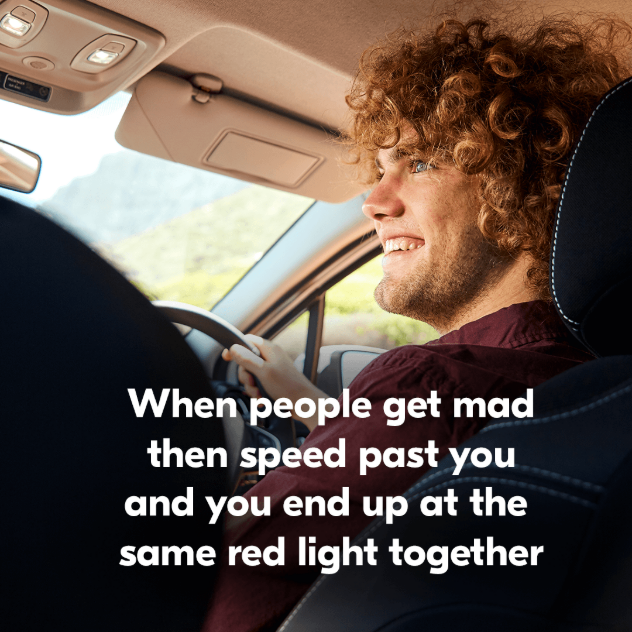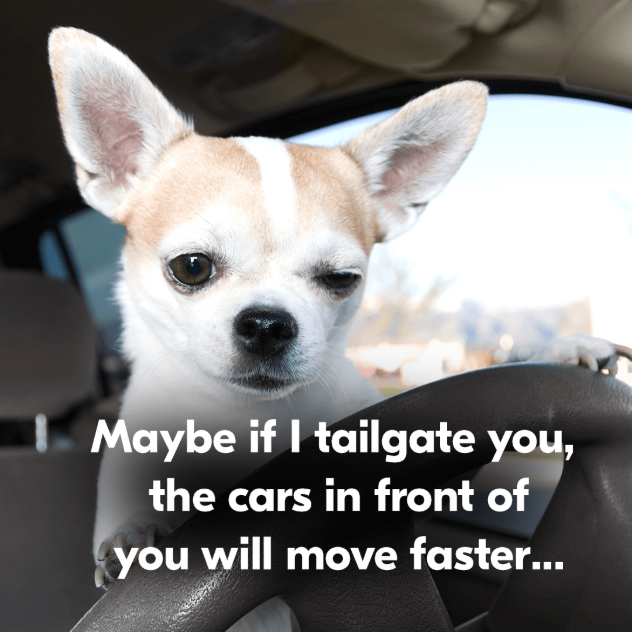
Many motorists see driving as an A to B exercise, while others treat it like a hobby and some maybe even view it as therapy! Regardless of which camp you belong to, we all share (and pay for) the road and have a right to enjoy it.
Exercising basic etiquette helps make everyone’s trip a little more enjoyable – and a whole lot safer – by reducing the likelihood of arguments and dangerous situations. Read on to see the NRMA’s top driving etiquette tips for how to be a better, calmer, more courteous driver:
A little effort goes a long way when it comes to polite gestures. Many situations on the road can warrant a friendly wave, but there are a few when it’s expected.
If another motorist has gone out of their way to make your trip a bit easier by giving you space to move into a lane or giving way on a tight street, a wave of acknowledgement to show you appreciate their generosity is the decent thing to do.
Remember though, keep waves contained inside your vehicle and don’t use your hazard lights as a thank you gesture.
Read more: Is the courtesy wave necessary?

A courtesy that should go without saying – yet is regularly neglected – is not pinching someone else’s parking spot.
While you may feel being frustrated or running late entitles you to a space, if another driver has clearly and reasonably signalled intent to take it before you have, the spot is theirs.
Pedestrians come first in car parks, so remain calm and courteous while on the hunt for a park. Road rage can escalate dramatically in car parks, and drivers have a generally higher chance of meeting someone who has wronged them again – either behind the wheel or on-foot.
Read more: Car park etiquette rules
Vehicles are fitted with indicator lights for a reason. Using them properly is not only expected by other motorists, but legally required by the NSW Government. Other road users will appreciate you taking the time to ensure everyone's safety.
The rules surrounding when (and when not to) use your indicator lights are clear. A quick bit of research will make you a safer and more courteous driver, less likely to incite rage, or put yourself and others in danger.
Read more: The rules for proper indicator use
Horns are fitted to vehicles as a safety feature and should be treated as something you’re glad to have but hope you never need.
Using your horn as a loudspeaker to voice your annoyance – or even a quick toot to friends as you depart – are both seen as misuse of your horn and can result in a heavy fine.
Only use your vehicle’s horn to
Read more: When to use your horn

Certain things just don’t improve a situation, and reacting to driving – even if it is poor – with swearing and rude gestures is one of them.
If you wouldn’t say or do something to someone in a different environment, then you shouldn’t be doing it on the road. An obscene gesture or verbal insult towards pedestrians or other motorists is not okay simply because you feel safe inside your car.
If an incident like a collision has taken place, your first priority is to ensure everyone involved is okay and contact emergency services if necessary. A hot head will make the situation far more stressful.
Read more: What constitutes road rage?
While maintaining a safe space between you and the vehicle in front is a crucial piece of defensive driving, it doesn’t mean your speed can’t be adjusted to allow someone to merge.
Speeding up to block someone from entering a lane, or ignoring the ‘zipper’ formation as two lanes merge, is rude and dangerous driving which ultimately slows everybody down.
By the same token, show courtesy when you yourself are merging - another motorist’s safe stopping distance is not an invitation to swerve into that lane. Your indicators should always be used to give ample time to warn other drivers, and a courtesy wave never goes astray.
Read more: The dos and don'ts of merging
If you find yourself being tailgated, increase the distance to the vehicle ahead to 4 seconds, which allows for increased reaction time for the tailgater behind: be courteous and move to the left lane (if on a multi-lane road); or pull over if safe.
Do not brake check (slam your brakes). A crash might ensue, and more often than not, it will involve an innocent driver further back.
Read more: How to deal with tailgating drivers

Australia has more than one road and occasionally they intersect. While people travelling on different roads often have different destinations, the whole system only works if we respect these intersections.
If no space on the other side of an intersection exists to fit your car (with zero overhang on the pedestrian crossing), then be patient and wait. The same goes if someone has blocked your route: be patient, as driving around them may require crossing onto the wrong side of the road.
Turning across the flow of traffic requires drivers to give way. At busy intersections, this often means drivers are left waiting until the lights have gone amber – and oncoming traffic stopped – to complete the manoeuvre. When approaching an amber you must stop. It’s also courteous to stop to let a driver trying to cross traffic go.
Read more: Can I get fined for driving through an amber light?
Similar to intersections, obeying the law at Give Way signs, Stop signs, and roundabouts is not at the discretion of drivers.
If you find yourself stuck at a Give Way sign or roundabout for an extended period, don’t get frustrated and accelerate out into traffic. Negative emotions will not get you to your destination any faster. Wait until a safe space is available so you do not impede other road users.
This same etiquette also applies to high-speed roads such as highways and freeways. While the law states drivers not overtaking only need to move left on roads with a speed limit exceeding 80km/h, (unless signposted) the etiquette can still be practiced at lower speed limits.
Road users may use the right lane when they need to turn right at the next intersection or driveway.
Read more: Roundabout rules for giving way